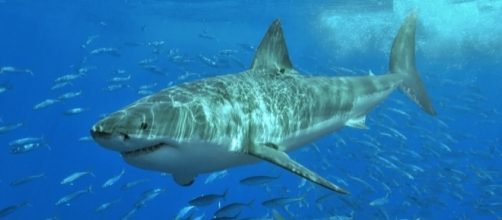In the deep Pacific Ocean, scientists discovered an unusual shark 17 years ago. It was a new mini-shark. Not even a foot long, the adult shark weighed less than 2 pounds. It had a strange, large bulging snout, or "sniffer," as Stephen M. Kajiura, Ph.D., calls it. Kajiura was a graduate student as part of the team that discovered the new shark.
According to the FAU News Desk, to the surprise of the discovery team, their paper, when sent to a journal for consideration for publication, generated a response from the peer reviewer who said that they had classified the mini-shark incorrectly and that it might actually be a new species of shark.
17 years classifying the new miniature shark
A new research team formed as a consequence of the reviewer's remarks and the quest for identity and classification of the glowing mini-shark began in earnest.
The new team tasked with the classification of the new shark was headed by David A. Ebert, Ph.D., and included Kajiura. The team worked for 17 years measuring and categorizing the tiny shark and comparing it with specimens available to them at the Pacific Shark Research Center at Moss Landing Marine Laboratories, Moss Landing, Calif., and the Elasmobranch Research Laboratory of the Charles E. Schmidt College of Science, Florida Atlantic University (FAU), in Boca Raton, Fla.
Kajiura present at discovery and for classification
Kajiura, the co-author of the study and Professor of Biological Sciences as well as Director of Elasmobranch Research Laboratory at FAU, was with the new shark from discovery through classification and to the publication of the recent paper appearing in the journal Zootaxa. David Ebert, lead author, and Kajiura and team have identified the glow-in-the-dark mini-shark as being part of the Lanternshark family, Squaliformes Etmopteridae, and have named the new species Etmopterus lailae.
Characteristics of the bioluminescent Lanternshark Etmopterus lailae
As Kajiura describes the new Etmopterus mini-shark, it "has a strange head shape and an unusually large and bulgy snout ....
These creatures are living in a deep sea environment with almost no light so they need to have a big sniffer to find food." Other distinctive characteristics of the bioluminescent new Etmopterus lailae Lanternshark include:
- "flanks on the bottom of its belly" that glow-in-the-dark through bioluminescence.
- markings on "the flanks on the bottom of its belly" that go forward.
- markings on its belly that go backward.
- a smooth patch having no scales on the underside of its large snout.
- fewer teeth than other sharks.
- unique markings on its tail and belly.
Etmopterus lailae 'tip of the iceberg' of 'undescribed species'
Ata Sarajedini, Ph.D., who is the dean of the Charles E. Schmidt College of Science at FAU said: "The research team's discovery of a new shark species is evidence of how much is still undiscovered in our world. This new species is the tip of the iceberg ... [of] great potential for all of the yet-to-be [sic] undescribed species that still need to be explored."


